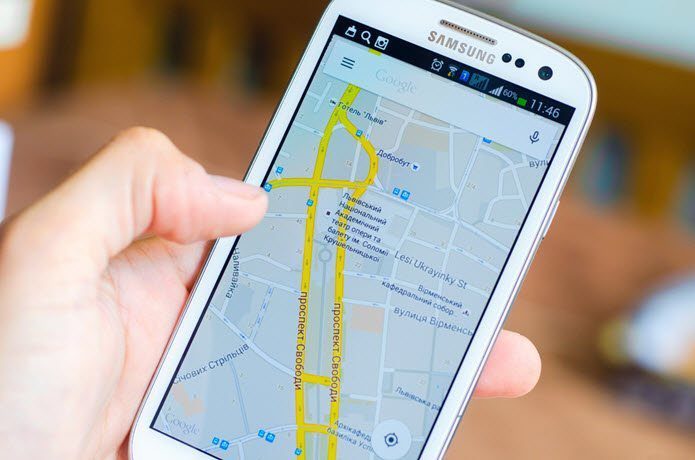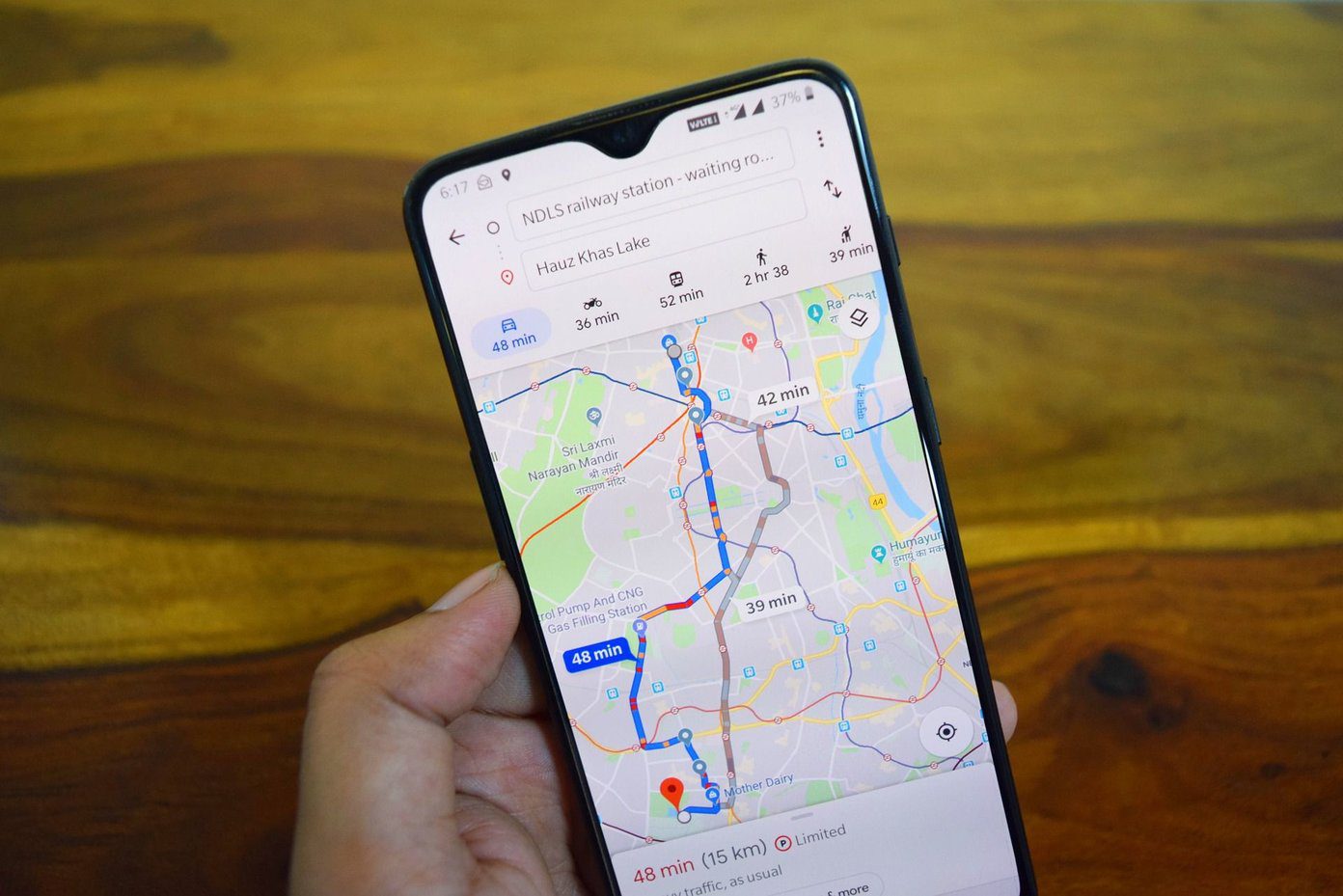Out of the many offline navigation apps available on the market, Google Maps and HERE WeGo from Nokia are two of the very best options available. But, which one out of these two is the best, we will try to find out in this post. For this, we have tested both these apps using an Android phone and have tested their online as well as offline features and we will help you decide which app you should have on your phone. Download HERE WeGo Download Google Maps
1. Price
Earlier Nokia’s HERE WeGo (Formerly HERE Maps) used to be an exclusive feature of Nokia devices and its availability was also quite limited. It was only after a considerable amount of time the company decided to make it public along with all its features and today Android users can enjoy the benefits of it on their phones, free of cost. Google, on the other hand, has always been available across different platforms. Although the availability of features has varied drastically, however, for Android, Google Maps has been the best solution offering all its features and that too for free. Therefore, when it comes to deciding the best app based on its price, both these apps are right there at the top. They offer their services free of cost and that includes offline navigation as well.
2. Offline Availability
As we have already touched upon the topic of offline navigation in the last point, here we will talk about it in a little more detailed manner. Since my Nokia days (Symbian OS) when the devices were not as fast as we see today, HERE has been my go-to solution for offline navigation. There are several reasons for me to choose that, however, the main reason for me to choose this was that there was no limit as to how long I can keep the offline copy of the maps for a particular location on my device. However, one area where Here WeGo falls short of Google Maps is with the ability to customize the offline maps. We will talk about it in the following points. For now, let’s move ahead and talk about Google Maps. Google has made its Maps app really wonderful and it also comes as a default/pre-loaded app for Android phones. However, when it comes to Offline navigation, Google does a great job overall, but at times it will surprise you with an odd-ball thrown at you at the worst possible time. I personally love the fact that you can choose the area you want to save or make available for offline use, however, the time limit or the fact that offline maps come with an expiry date is really a big turn-off. But in the end, both apps have good, if not similar offline features and they compete neck-to-neck with each other.
3. App Installation Size
Well, do not get fooled by the application size that is mentioned on the Play Store, in reality, these apps consume way lot memory on your phone that what the application size really is. I installed both these apps on my phone to check out how much storage they actually end up consuming especially when there are no offline maps stored on the phone. To make it an absolutely fair comparison, both apps were installed from scratch and have been used for a span of 15 days and post that usage these reading have been captured. Not to be surprised but Google Maps consume nearly double the storage space as consumed by HERE WeGo. Google Maps app installed on my phone running Android Oreo consumes a total of 395MB of space. This includes app installation, User data and the Cache. HERE WeGo on the other hand on my phone running Android Oreo consumes a total of 190MB of space. This includes app installation, User data and the Cache. Overall, a 200MB storage space might not be much for devices with 64GB storage or more, however, there are users who have a modest 4GB or 8GB of storage, for them this difference could mean a lot. Therefore, in this regard, HERE WeGo get a slight advantage over Google Maps.
4. Offline Map Customization
One of the biggest disadvantages of Google Maps is also a big advantage for it. Remember we talked about how Google Maps allows you to save customized offline maps on your device. While saving offline maps with Google, the app asks you for the area you wish to save on your phone. While on the other hand, HERE WeGo has present areas to download for offline usage. It might look like a small feature, but it is actually a huge advantage for Google Maps. Users can choose the area they wish to save for offline use and in turn, it helps save a considerable amount of resources, be it in terms of data or even the storage space on your phone. All you need to do is go to offline maps and select the area which you wish to save for offline use. It could be as small as 20 Kilometre square. Making it a clear winner in this round.
5. Traffic Updates
Both apps have a lot of users and therefore they have some pretty accurate traffic approximations to offer. However, Google has a better traffic algorithm as compared to HERE. Google Maps can actually show you the density of traffic on any given street down to very heavy traffic, denoted by a stark red color. However, Here Maps has just very basic information when it comes to color usage and heavy traffic is denoted by red, moderate by yellow and easy-going traffic is denoted by green. This deeper color gradation really makes a big impact and is a very helpful feature for the user.
6. Active Rerouting
This is another very interesting feature that is a must-have for any navigation app. Active rerouting allows the app to modify or alter the assigned route in between the journey when the app detects that there is a congestion on the way. Sadly, HERE WeGo misses out on this feature despite being able to monitor live traffic updates. Google, on the other hand, wins this one because it estimates the route based on the shortest time. Although, there have been instances where I’ve been stranded on a remote path, all thanks to Google, but, that’s for another time. Google Maps have a very interesting and accurate rerouting algorithm, if there is a congestion on the way, Google will first of all try to avoid that completely, however, if in case the situation has changed while you are on the way, it will alert you for that and suggest an alternative route. Partially I fee that this is because Google owns Waze and it has a large group of active users who keep alerting fellow passengers about road hazards and conditions.
7. Third-party App Integration
Last but not the least, Google Maps is practically everywhere, and it has a very rich third-party app or services integration. While on the other hand, HERE WeGo is relatively new to this game and has a long way to go before it reaches the same point at which Google Maps stand today.
Google All the Way
It is true that Google is a big company and has a large base of developers plus the fan community helping them improve their products. However, being a long time HERE Maps user, I can say that they have also come a long way from where they were before. Today you have access to indoor maps, 3D mapping, live updates and so on. All this points in just one direction and that says that HERE is also moving in the right direction. Maybe, it is not as powerful as Google Maps is today, but 10 years down the line, who knows it could be HERE all the way. The above article may contain affiliate links which help support Guiding Tech. However, it does not affect our editorial integrity. The content remains unbiased and authentic.























